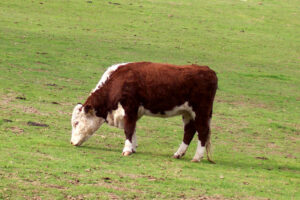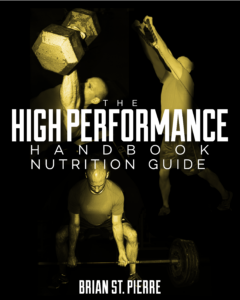
Holistic Farming: A Wholesome Choice
It’s been a while since we featured a nutrition post, so today, Cressey Sports Performance Coach Andrew Zomberg takes the baton and brings nutrition back to the forefront. Enjoy! – EC
From a production standpoint, most farms focus on maximization. Big farms. Big concrete barns. Lots of cows. Lots of food. But this mentality only sees profit and neglects the economic, social, and environmental realities of these decisions. Fortunately, some farmers recognize the need to change and sustain our ecosystems.
I have the pleasure of buying a lot of my meat from Steve Normanton. A farmer since the ripe age of 8, Steve learned the livestock trade in South Africa and recently established himself as a full-time farmer in Litchfield, NH. His holistic farming system mirrors nature in a way that builds fertility in the soil, treats the animals humanely, and produces healthy food. He takes the focus away from yield maximization and puts it towards input optimization.
According to Holistic Management International, holistic farming is a whole planning system that helps farmers better manage agricultural resources in order to reap sustainable environmental, economic, and social benefits. This practice allows farmers to guide the relationships between plants, soil, livestock, people, and water in ways that mimic nature, while addressing the financial aspects of these unique elements. “The concept of holistic management takes into account the well being of everything involved,” says Steve. “It is not just about end product because in order to get this end product, you must better the whole.”
The term “organic” is such a buzzword, so I questioned the difference between organic farming and holistic farming. Apparently, while “organic” is a great place to start, it only refers to the end product, or the food we put into our mouths.
“Take organic dairy,” Steve suggests. “Sure, it is organic because the feed that the cows eat is organic. But cows are not designed to consume loads of grain. The grain (which fattens the cattle) turns a cow’s stomach very acidic. This toxic environment manifests super e-coli, which humans cannot tolerate.” Cows are meant to roam free and eat grass, and Steve Normanton Farm values this, allowing animals to exist they way they should.
Holistic planning not only respects the animals, but uses their natural tendencies to keep land healthy and productive. For example, pigs are not thrown in concrete barns. They graze freely to root their nutrients, receiving 70% of their diet from underground. This nurtures biologically active soil (loaded with carbon and other organic matter) that attracts all that’s good, including water molecules. This increases the grazing capacity for the livestock and reduces the impact of erosion on the farm.
“If the soil is healthy, the grasses are healthy and we are providing better food for the animals” says Steve. “And remember, we are at the end of the food chain, so healthier animals means healthier food for us.”
Why am I writing this article? As a nutrition enthusiast, I encourage people to make the healthiest choices. Holistic farms nurture their soils and grasses for the welfare of their animals to produce high-quality, nutrient-dense food, which:
• Has a high concentration of beneficial fatty acids and a healthier ratio of omega-6 to omega-3 fatty acids (omega-3s in beef that feed on grass is 7% of the “total fat” content)
• Is lower in total fat – especially saturated fat; leaner meat leads to lower LDL levels and lower in total energy (calories)
• Comprised of many micronutrients including: beta-carotene and Vitamin E (antioxidants), B-vitamins (thiamin & riboflavin) and minerals: calcium, magnesium and potassium (electrolytes)
• Has high levels of Conjugated Linoleic Acid (CLA, a fat found in meat & milk)
Further, the animals themselves are healthier, demanding less (if any) antibiotic treatment. They have minimal risk of contamination from dangerous bacteria because they aren’t confined in tight, crowded conditions. And most importantly, the animals are raised without added hormones, antibiotics, or steroids. (Exposure to chemicals and pesticides increases our chances of suffering from metabolic conditions such as obesity, insulin resistance, autoimmune disorders, and more).
The choice to buy from holistic farms is also economically smart. The dollar stays in our community and contributes to the growth and stability of the American economy. And sure, short-term, holistic management yields healthy food. But long-term, these farms enhance the biological diversity and productivity of our land. When we buy from these farms, we help mirror the way nature functions, sustaining the environment that sustains us all.
Food is always at our fingertips. But as consumers, we can help move away from conventional thinking and our way of eating and understand the situation. So next time you need to stock up your refrigerator, I encourage you to make decisions that feed your body right as well as emulate the way nature functions to ensure that our future is truly sustainable over time.
You can learn more about Steve and his farm at https://stevenormanton.com. For holistic farms in your area, visit https://www.eatwild.com.
Looking for more nutrition insight like these? Be sure to check out The High Performance Handbook Nutrition Guide by Brian St. Pierre of Precision Nutrition; it’s available as part of the gold package of this resource.






